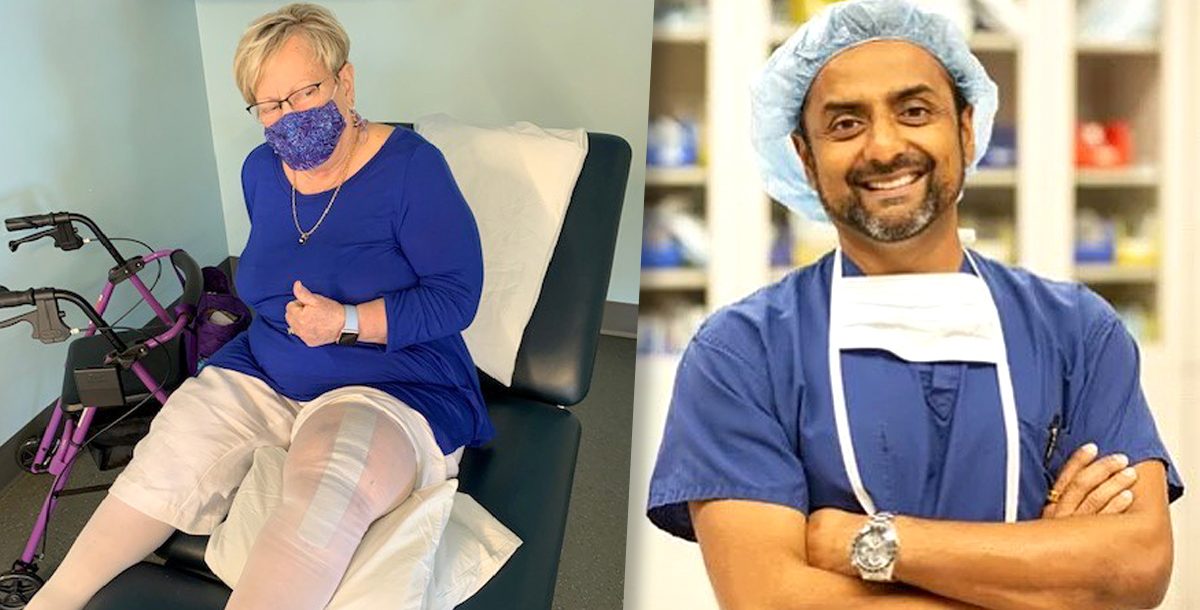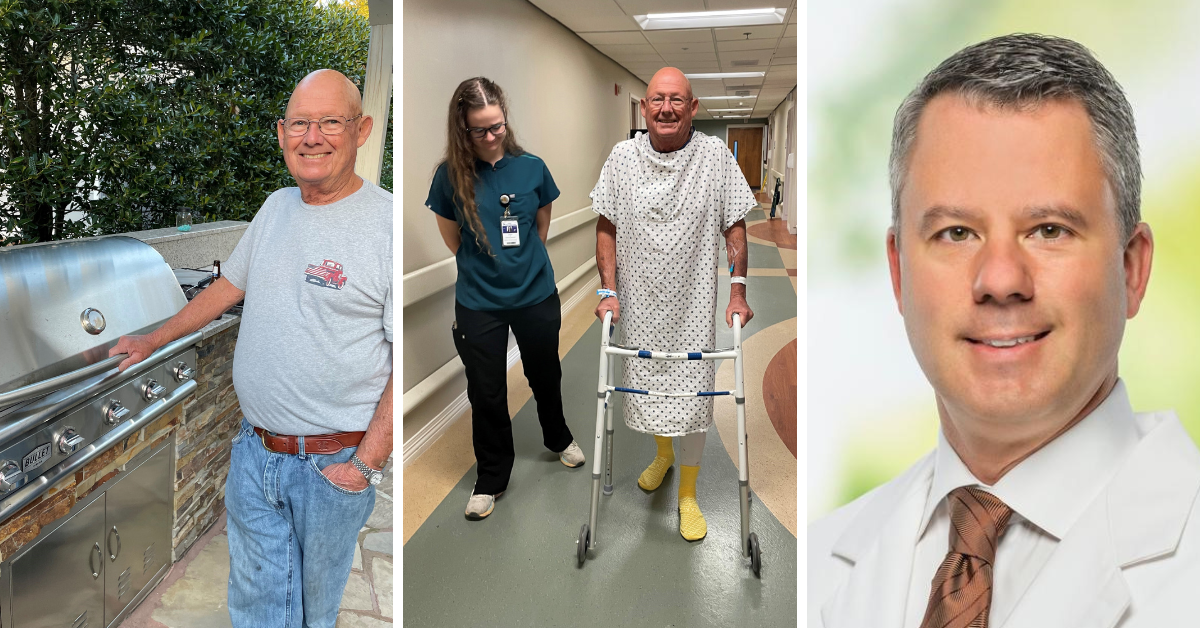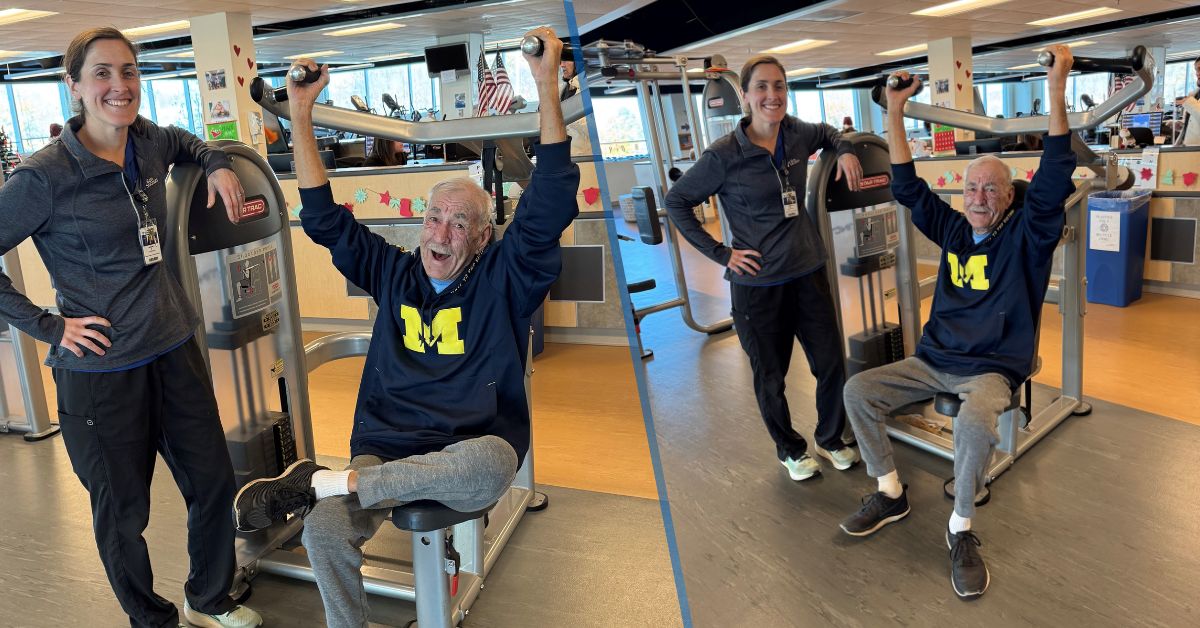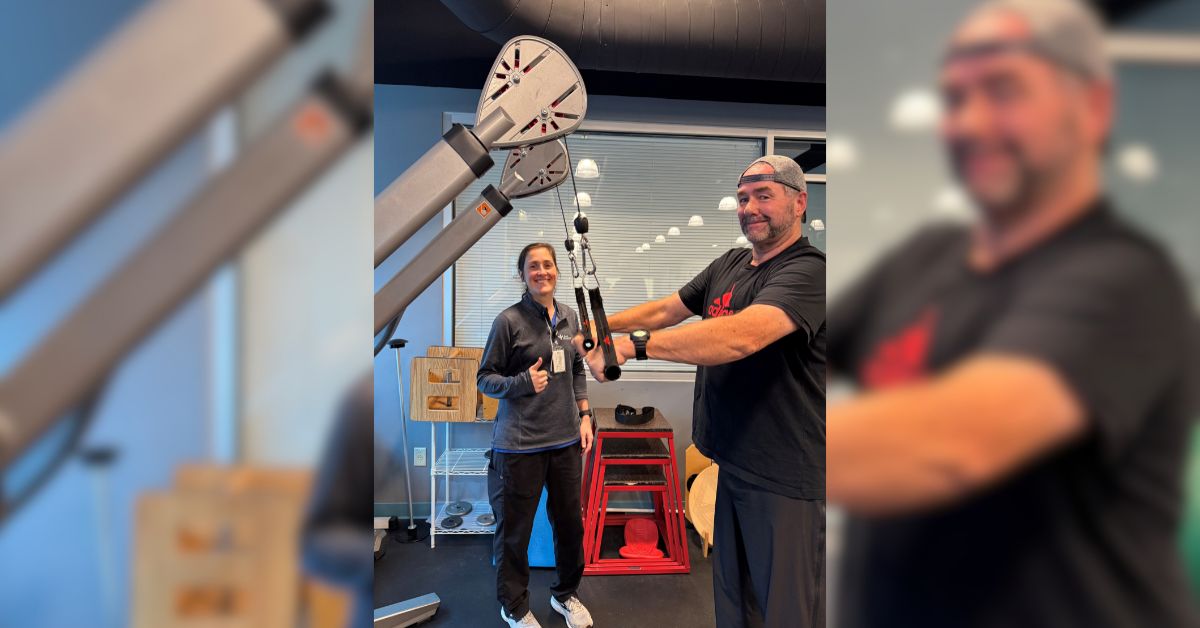Pam Phillips, a resident of Norfolk, VA, loves spending her time with family. She has a husband, two daughters and 10 grandchildren that she loves very much. She has also traveled the world extensively, including for 25 years as an army wife.
However, one day in 2019, Pam fell and fractured her knee. The pain was terrible, and the injury kept her from being able to live the life she loved. In fact, Pam couldn’t even walk without severe pain.
“It was consuming,” Pam reflects.
Even simply going from her house to her car, just a few steps away in the driveway, was nearly impossible.
Pam shares she often thought to herself: “If I could just go back to my normal life, that would be great.”
Pam has a background in physical therapy, so she was aware of the potential risks involved with getting knee surgery. She spent a great deal of time researching her options because she wanted to get the best possible solution that involved as little risk as possible.
Pam’s research led her to Manish Patel, MD, an orthopedic surgeon at Bon Secours Southampton Medical Center. Nearly 15 years ago, Dr. Patel created the Jiffy Knee procedure, which is minimally invasive. His unique approach to this operation was federally trademarked almost three years ago.
Traditional knee surgery, known as a total knee replacement (TKR), requires doctors to cut tendons in and around the knee. However, Dr. Patel’s Jiffy Knee procedure “only left a small, faint scar because there was barely any incision to begin with,” Pam recalls.
Dr. Patel confirms this assessment: “Patients who are experiencing knee pain should at least consider the Jiffy Knee procedure before settling for a painful, traditional knee replacement.”
The Jiffy Knee procedure even forgoes staples, stitches and drains.
“Ninety-seven percent of patients go home the same day, just a few short hours after the operation,” Dr. Patel explains. “They’re also able to walk upstairs again within three hours and they’re driving independently again within seven to 10 days.”
Patients who receive the traditional total knee replacement are often in pain for six to eight weeks while their knee heals.
“With Jiffy Knee, patients can squat, move and get back to active lifestyles much quicker and with much less pain than they can with the traditional operation,” Dr. Patel shares.
In Pam’s case, she was only in outpatient medical rehab for four to six weeks after getting the Jiffy Knee procedure, whereas traditional outpatient medical rehab can last for up to 12 weeks.
“I only missed five days of work,” Pam adds.
Dr. Patel is one of a very few doctors in the country that uses the Jiffy Knee procedure.
“Patients travel from all over the world for this procedure. Alaska, Alabama — you name it,” he shares.
Thankfully, Pam didn’t have to fly in for her procedure because Dr. Patel practices in the area where she lives. During her procedure at Southampton Medical Center, Pam found that our team members were terrific and that the anesthesiologists had her laughing before the operation.
“I felt very comfortable,” she says. “The staff members were calming, and Dr. Patel was very attentive and kind.”
Thanks to the Jiffy Knee operation, Pam is now able to do the things she loves again. She walks one mile several times a week and has even been swimming again on a regular basis. She also gets to play with her grandchildren and travel now without pain.
“For the first time in years, I feel like I have my life back. At first, I couldn’t see the light at the end of the tunnel. I was afraid I wouldn’t lead a normal life again, but now I can and am living a normal life again!”
Learn more about the knee care services we offer at Bon Secours as well as our orthopedics and sports medicine care.





